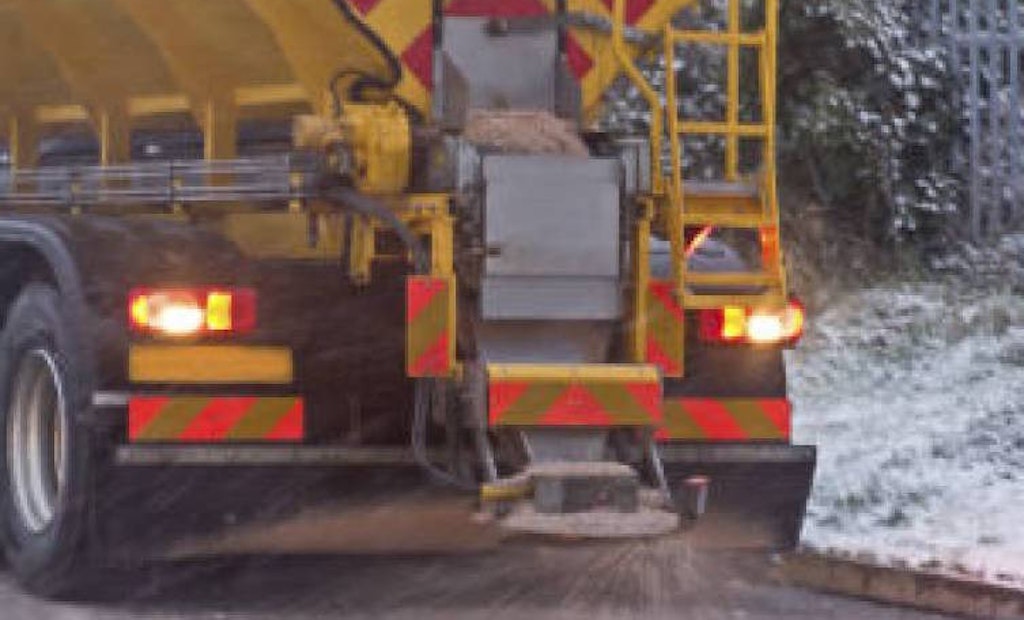
Interested in Location/Detection?
Get Location/Detection articles, news and videos right in your inbox! Sign up now.
Location/Detection + Get AlertsResidents of the Spring Harbor neighborhood in Madison, Wisconsin, say their drinking water is a little on the salty side these days. And their taste buds aren’t deceiving them.
According to a report by local TV affiliate WKOW, a well that provides water to the neighborhood is producing salt concentrations of about 120 mg/L. Joe Grande, water quality manager for the Madison Water Utility, says the culprit is decades worth of road salt used during winter.
“The sodium and chloride that’s in that road salt doesn’t break down, it doesn’t degrade, so all those thousands of tons of salt are now in the soil, in the groundwater or in the lakes,” Grande says. “It doesn’t disappear. It’s been accumulating for 60 years over the six decades we’ve been applying road salt here in the city.”
He says without that human impact, the typical salt concentration in groundwater would be approximately 5 to 10 mg/L. The rate of increase has been more significant in Spring Harbor in recent years, partly because University Avenue near the neighborhood gets a lot of traffic and thus is heavily salted in winter.
“People expect summer driving conditions throughout the winter,” Grande says.
A national problem
It’s a similar situation in other northern communities across the country that rely on salt to keep roads clear during winter. United Water’s drinking water supply for 800,000 people in New Jersey’s Bergen and Hudson counties had sodium concentrations of 108 mg/L as recently as early March. It goes beyond affecting the taste of tap water.
“It’s not a health concern for the typical customer, but customers who have health issues should consult with their family physicians,” says Steven Goudsmith, a United Water spokesman, to the Bergen Record.
The U.S. Environmental Protection Agency recommends sodium levels in drinking water be no higher than 20 mg/L for those on sodium-restrictive diets.
According to the Bergen Record article, another New Jersey utility — the Passaic Valley Water Commission — combined water from two different sources to keep salt concentrations in check. Salt levels at the commission’s main intake on the Passaic River have risen as the salt travels from roadways into storm drains that dump into the river. The commission is currently mixing water from the river with a supply from the Wanaque Reservoir, an area surrounded by more rural terrain.
Wisconsin Salt Wise, a group raising awareness about the effects of road salt, says chloride concentrations in Madison’s Lake Mendota have increased about 1 mg/L each year in the past 50 years. At that rate, the lake will eventually reach concentrations too toxic for aquatic life.
Long-term studies of other water bodies have produced similar results. According to a Smithsonian Magazine article, a group of scientists tracked salt levels in the Mohawk River in upstate New York from 1952 to 1998. They found sodium levels increased by 130 percent in that time and chloride levels increased by 243 percent, likely due to road salting as the surrounding area became more developed.
Another study of a stream in southeastern New York from 1986 to 2005 showed a similar pattern with road salt accounting for about 91 percent of the watershed’s salt content. More than 40 percent of urban streams had chloride levels too high to support aquatic life, according to a study released by the U.S. Geological Survey in 2009. Only 4 percent of the streams in agricultural areas had the same levels. The study examined 100 streams covering parts of 19 different states in the northern part of the country. Yet another study by University of Minnesota researchers in 2009 suggested 70 percent of the salt applied to roads in the Twin Cities metro area has been retained in the area’s watershed.
While acknowledging that abolishing the use of road salt is unlikely, groups like Wisconsin Salt Wise — of which Madison Water Utility is a member — are trying to mitigate its effect. Wisconsin Salt Wise and other groups provide information about how salt can be applied most effectively so less is used during winter.
Dealing with the problem
The environmental impact aside, when it comes to remedies to reduce salt concentration in the drinking water supply, the solutions can be costly or produce new challenges. For example, the most common method of desalination — reverse osmosis — is often cost-prohibitive for water utilities.
“Costs vary, but the lowest price for desalinated water from a reverse osmosis plant is around $750 an acre-foot — more than double the average cost of groundwater,” says a report in the journal Yale Environment 360.
For Madison Water Utility, one possible action to counter the high salt levels in Spring Harbor’s drinking water would be making the well deeper. But according to Grande, that’s at least 10 years away and wouldn’t be a perfect fix.
“All of our wells that are cased into that lower aquifer … they have iron and manganese and to some extent, they have radium,” Grande says. “Those introduce additional water quality problems that would require some treatment.”
According to the WKOW report, the Madison Water Utility is hoping to perform a study in the next few years to find ways to reduce the amount of salt in the area’s groundwater.





